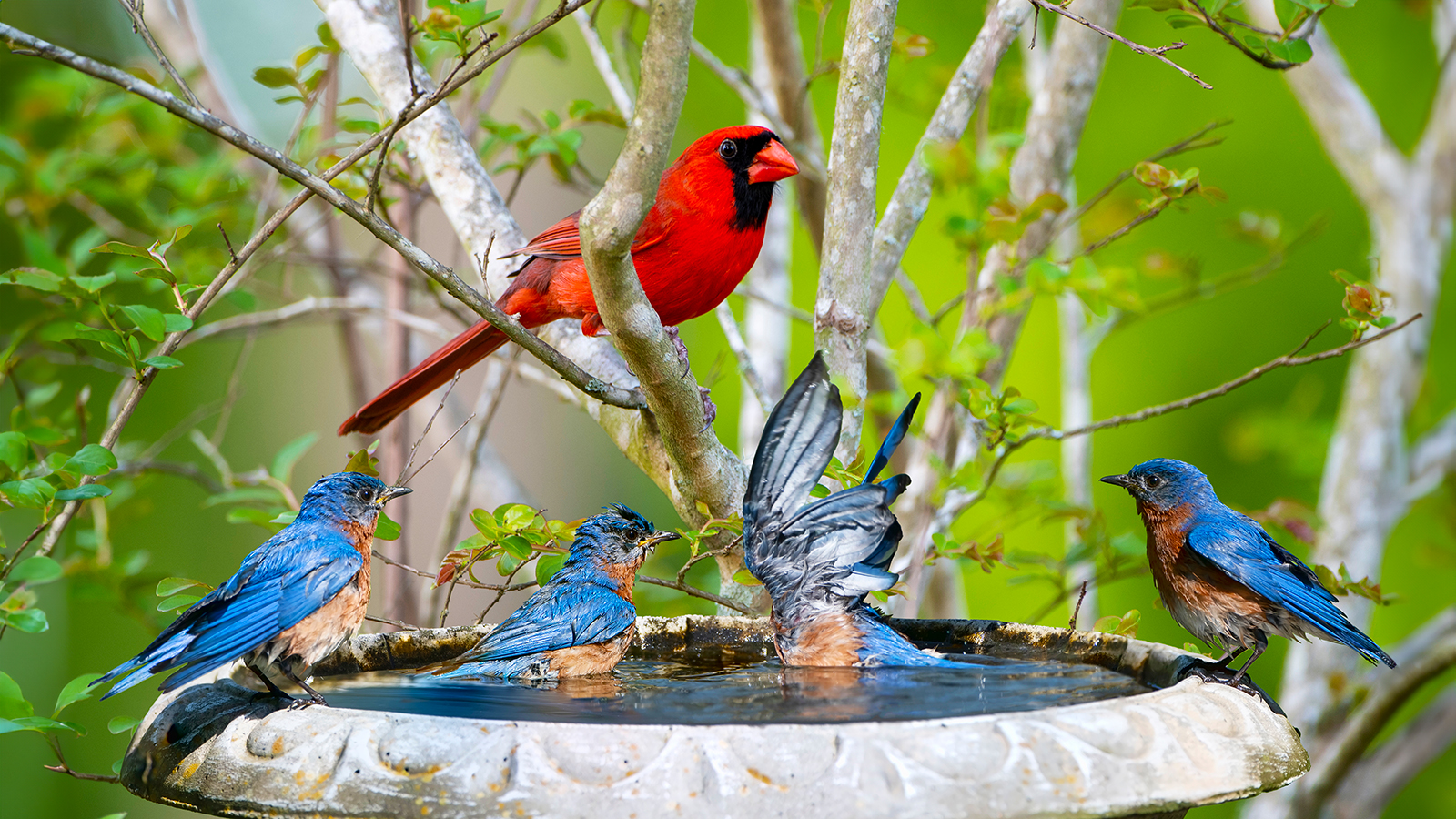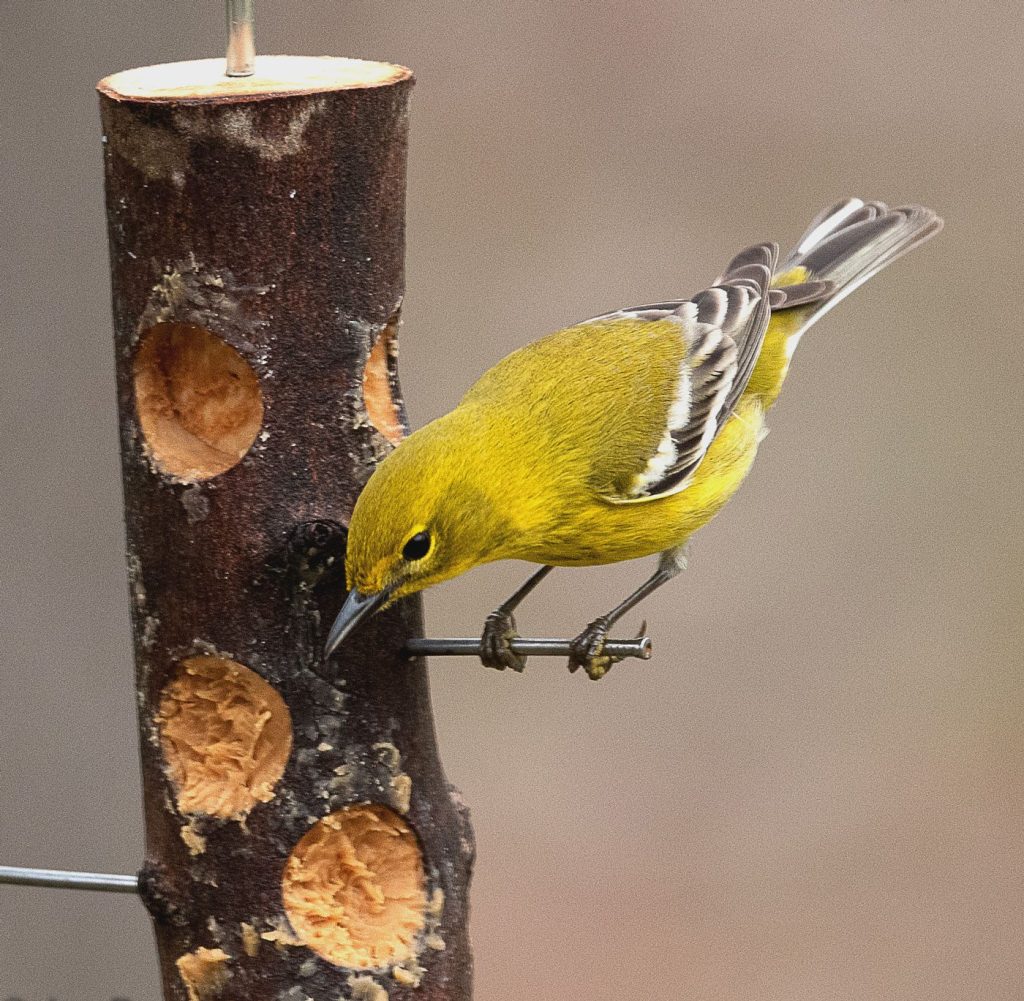If you want to enjoy more colorful birds visiting your yard, where you place your bird feeder matters more than you might think. The right spot can turn your outdoor space into a lively bird paradise, while the wrong one might keep them away.
You’ll discover simple yet powerful tips to position your feeders perfectly. By the end, you’ll know exactly how to attract a variety of birds and create a welcoming haven they’ll love to return to again and again. Ready to see your garden come alive with fluttering wings?
Let’s dive in.
Choosing The Right Location
Placing a bird feeder in the right spot helps attract more birds. Birds feel safe and comfortable in certain areas. This guide helps you find the best place for your feeder.
Consider quietness, sunlight, and shelter. These factors make birds visit and stay longer at your feeder.
Spotting Safe And Quiet Areas
Birds avoid noisy and busy places. Choose a quiet spot away from loud machines and traffic. A safe area lets birds feel relaxed while feeding.
- Look for places far from roads and sidewalks
- Avoid spots near loud appliances or pets
- Pick areas with low human activity
- Check for places with some natural cover like bushes or trees
Balancing Sunlight And Shade
Birds enjoy sunlight but need shade too. Too much sun can spoil seeds and make birds uncomfortable. Too much shade may hide the feeder from birds.
| Condition | Effect |
|---|---|
| Full Sun | Seeds dry out fast; feeder heats up |
| Full Shade | Birds may not see feeder easily |
| Partial Sun and Shade | Best for seed freshness and bird comfort |
Considering Nearby Shelter
Birds like to feed near places they can hide quickly. Nearby trees, shrubs, or bushes offer shelter from predators and bad weather.
- Place feeders within 10 to 15 feet of cover
- Avoid placing feeders too close to places predators can hide
- Choose spots with easy flight paths to shelter
Selecting Feeder Types
Choosing the right bird feeder helps attract different bird species. It also makes feeding easier and cleaner.
Feeders come in many shapes and sizes. Each type suits specific birds and feeding habits.
Tube Feeders For Small Birds
Tube feeders are narrow and tall. They hold small seeds that small birds like finches enjoy.
These feeders have many small holes and perches. Small birds can eat safely without big birds taking over.
- Ideal for seeds like nyjer and sunflower chips
- Prevents larger birds from crowding out smaller ones
- Easy to clean and refill
Platform Feeders For Variety
Platform feeders are flat trays open on all sides. Birds of many sizes can land and feed.
These feeders attract a wide variety of birds. You can offer mixed seeds, fruit, or suet on them.
- Supports many bird types including doves and jays
- Easy for ground-feeding birds to use
- Needs regular cleaning to avoid mold
Hopper Feeders For Larger Species
Hopper feeders hold a large amount of seed. They have a roof to keep seeds dry and a tray below for birds to perch.
These feeders attract bigger birds like cardinals and grosbeaks. The design lets many birds feed at once.
- Good for sunflower seeds and mixed blends
- Protects seeds from rain and snow
- Sturdy and stable for heavy birds
Height And Visibility Tips
Placing bird feeders at the right height helps birds feel safe and comfortable. Good visibility lets birds find food easily while staying alert to dangers.
Choosing the best spot for your feeders improves your chances of attracting many birds. Let’s look at height and visibility tips to help you place feeders well.
Optimal Height For Bird Comfort
Most birds prefer feeders placed between 4 and 6 feet above the ground. This height keeps them safe from predators like cats.
Some birds like the ground or higher spots. Ground feeders suit sparrows and doves. Tall feeders work well for woodpeckers and finches.
- Place feeders 4-6 feet high for general bird comfort.
- Use ground feeders for ground-feeding birds.
- Put tall feeders near trees for climbing birds.
- Avoid heights above 10 feet; birds may feel unsafe.
Making Feeders Visible Yet Safe
Birds need to see feeders clearly to find food quickly. Place feeders where they can be seen from open areas or near shrubs.
Keep feeders away from windows to prevent bird collisions. Use natural cover nearby for birds to hide if threatened.
- Place feeders in open spots visible to flying birds.
- Keep feeders at least 3 feet away from windows.
- Provide nearby bushes or trees for quick shelter.
- Check that feeders are not hidden by thick plants.

Credit: www.gardeningknowhow.com
Avoiding Predators And Hazards
Placing bird feeders in safe spots helps protect birds from dangers. Predators and hazards can stop birds from visiting.
Choosing the right location keeps birds safe and comfortable. It also makes watching birds more enjoyable.
Keeping Cats And Other Predators Away
Cats and other predators hide near feeders to catch birds. Place feeders where predators cannot easily reach them.
Use poles with baffles or hang feeders away from trees and fences. This stops cats from jumping onto feeders.
- Mount feeders 5 feet high on smooth poles
- Keep feeders 10 feet away from jumping spots
- Use metal baffles on poles to block climbing
- Trim nearby branches that predators use to jump
Preventing Window Collisions
Birds often fly into windows because they see reflections. Place feeders either very close or far from windows.
Feeders less than 3 feet or more than 30 feet from windows reduce collisions. Use decals or screens on windows to help.
- Keep feeders within 3 feet of windows
- Or place feeders over 30 feet away
- Apply bird-safe window decals or films
- Close blinds or curtains near feeders
Minimizing Exposure To Strong Winds
Strong winds can scare birds and spill seed. Place feeders in spots that block wind but allow birds to see well.
Use natural windbreaks like bushes or walls. Avoid placing feeders in open areas with no cover.
- Put feeders near shrubs or trees for wind protection
- Avoid open fields or rooftops with strong winds
- Check feeder stability to prevent tipping
- Keep feeders away from heavy rain paths
Seasonal Placement Adjustments
Bird feeders attract different birds throughout the year. Changing where you place feeders helps bring more birds to your yard.
Each season has unique needs for bird safety and comfort. Adjusting feeder spots keeps birds healthy and happy.
Spring And Summer Strategies
During spring and summer, birds are busy building nests and feeding young. Place feeders near shrubs or trees where birds can hide from predators.
- Choose shady spots to keep food fresh in warm weather.
- Place feeders away from windows to reduce bird collisions.
- Keep feeders clean to avoid spreading disease.
- Use water sources nearby to help birds drink and bathe.
Fall And Winter Considerations
In colder months, birds need feeders in safe, sheltered spots to protect them from wind and snow. Keep feeders close to trees or buildings.
| Season | Placement Tips | Why |
| Fall | Near dense bushes | Protects from wind, offers cover |
| Winter | Close to heated areas or south-facing walls | Helps keep food from freezing |
| Winter | Lower to the ground but safe from predators | Easier for birds to access |

Credit: www.allaboutbirds.org
Maintenance And Cleanliness
Keeping bird feeders clean helps protect birds from sickness. Clean feeders also attract more birds to your yard.
Proper maintenance ensures feeders last longer and stay safe for wildlife.
Regular Cleaning Schedules
Clean your bird feeders every two weeks or more often in wet weather. This removes old seeds and dirt.
Use warm water and mild soap to wash feeders. Rinse well to avoid harming birds with soap residue.
- Empty the feeder completely
- Soak parts in soapy water for 10-15 minutes
- Scrub with a brush to remove debris
- Rinse thoroughly with clean water
- Dry before refilling with fresh seed
Preventing Mold And Disease
Mold grows quickly on damp seed and can harm birds. Remove wet seeds and spills fast.
Place feeders where they stay dry and get sunlight. This helps prevent mold and bacteria growth.
- Check feeders daily for wet or clumped seeds
- Clean spills under feeders regularly
- Use feeders with good ventilation
- Keep the ground below clear to reduce disease risk
Attracting Specific Bird Species
Placing bird feeders correctly helps attract certain bird species. Different birds like different spots and heights.
Knowing where to put feeders can bring finches, hummingbirds, woodpeckers, and jays to your yard.
Tailoring Placement For Finches
Finches prefer feeders in open spaces near trees or shrubs. They like to perch nearby for safety.
Place feeders about 5 to 7 feet above the ground. Keep them away from busy walkways.
- Use tube feeders with small ports for finch seeds
- Position feeders near conifers or bushes
- Keep the area quiet and calm
Tips For Hummingbird Feeders
Hummingbirds like feeders placed in sunny spots with some shade nearby. They prefer quiet areas.
Hang feeders 4 to 6 feet high where you can see them easily. Keep feeders clean to prevent mold.
- Choose feeders with red parts to attract hummingbirds
- Place feeders near flowers for natural food sources
- Refill feeders every few days with fresh nectar
Welcoming Woodpeckers And Jays
Woodpeckers and jays like feeders near trees or thick branches. They enjoy perching spots close to feeders.
Place platform or suet feeders about 6 to 10 feet above ground. Avoid open windy spots.
- Use suet and nut feeders for woodpeckers
- Offer peanuts and corn for jays
- Keep feeders near natural cover for quick escapes

Credit: edis.ifas.ufl.edu
Frequently Asked Questions
Where Is The Best Place To Hang A Bird Feeder?
The best place is near trees or shrubs for bird shelter. Place feeders 5 to 10 feet from windows to prevent collisions. Ensure the location is safe from predators like cats. Also, pick a spot visible from your home for easy birdwatching.
How High Should I Place My Bird Feeder?
Place bird feeders 5 to 6 feet above the ground. This height keeps birds safe from ground predators. It also makes feeding comfortable for most bird species. Avoid placing feeders too low or too high for better bird visits.
Should Feeders Be Placed In Sunny Or Shaded Areas?
Place feeders in partial shade to protect birds from heat. Shaded areas keep seeds fresh longer by reducing moisture. Morning sun with afternoon shade is ideal. This balance attracts more birds and keeps them comfortable.
How Far Should Feeders Be From Windows?
Feeders should be at least 5 feet away from windows. This distance reduces bird collision risks with glass. Alternatively, place feeders within 3 feet to slow bird flight speed. Use window decals to increase safety further.
Conclusion
Birds bring joy and life to any garden. Placing feeders wisely increases visits. Choose spots with nearby trees or shrubs. They offer birds safety and comfort. Keep feeders clean and filled. Different seeds attract diverse birds. Experiment with locations and see what works best.
Observe which spots are most popular. Adjust placement based on bird activity. Patience is key. Over time, more birds will come. Enjoy watching them thrive in your garden. It’s a rewarding experience for everyone. Happy birdwatching!

